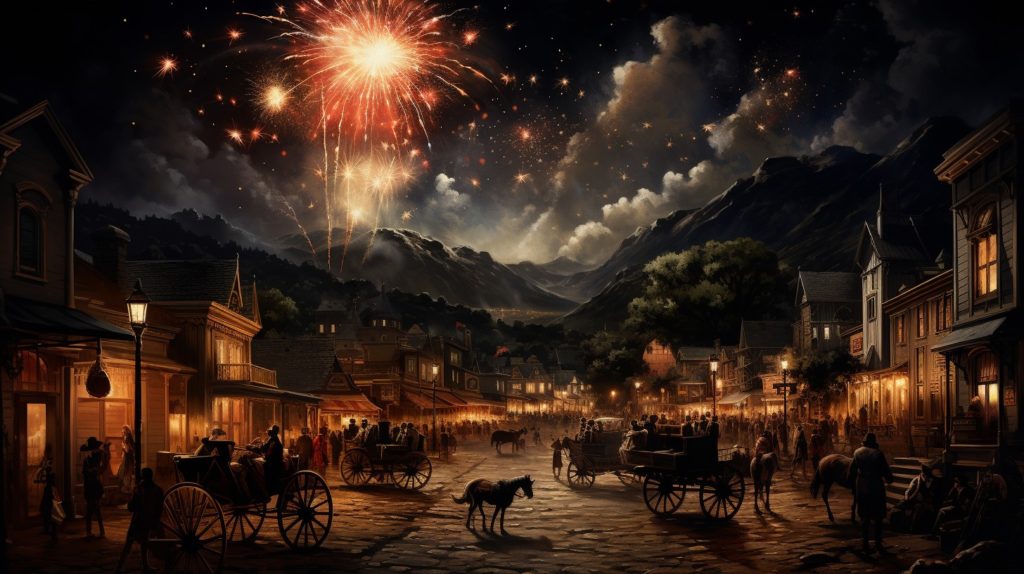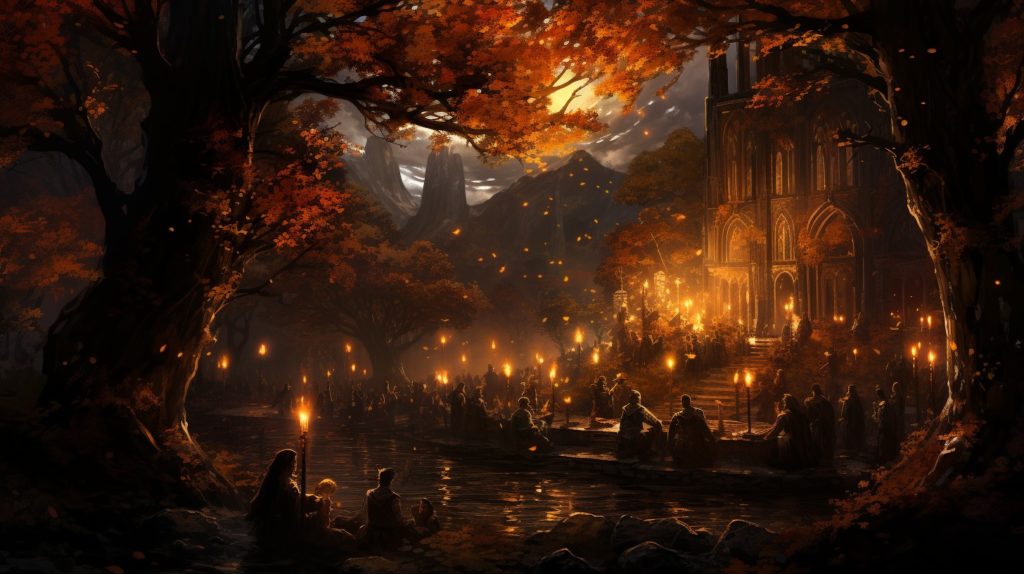
We’re in the middle of the 2023 holiday season, and I got to thinking about how I’ve used holidays in my novels. Then, I thought, why not write today’s blog post about how holidays can enhance stories, even if the holidays aren’t the focus? So, here’s that blog post.
Remember, though, that this information is useful any time of the year as you work on your own fiction, or encounter holidays in novels, comics, television, or movies.
As an author, I find holidays to offer their own sort of narrative potential. In my Adventures of Bodacious Creed trilogy, I’ve used holidays days not just as a backdrop but as a catalyst to deepen the storytelling, enhance character development, and enrich the world I’ve created. Holidays, with their rich traditions and emotional weight, offer an opportunity to add layers of meaning to a story.
Crafting Emotional Depth by Weaving Holidays into Fiction
In my novel, Bodacious Creed: a Steampunk Zombie Western, the protagonist’s death on July 4, 1876, America’s Centennial, is no mere coincidence. I chose this day for its inherent symbolism of freedom and new beginnings, creating a poignant contrast with Creed’s demise. (Of course, his death is just the beginning, but you’ll need to read the novel to learn more!)
This juxtaposition isn’t just about setting a scene; it’s about embedding the story with historical gravity and emotional resonance. The choice of this particular holiday adds a layer of irony and depth.

Building a Believable World
In Bodacious Creed and the San Francisco Syndicate, the Christmas celebration of 1877 with fireworks off the Presidio is more than a festive scene. It’s an immersive experience into the era’s culture and social customs. This isn’t just about painting a picture of the time; it’s about allowing readers to live it, and to experience how Creed and his new friends have become a found family. The holiday setting gives a glimpse into the societal norms and traditions of the period, offering a richer understanding of the characters and their world.
Holidays as Narrative Milestones
Holidays in fiction can serve as significant plot points and catalysts for character evolution. Just as Charles Dickens used Christmas in A Christmas Carol to drive Scrooge’s transformation, I find that holidays can mark crucial moments in a character’s journey. In the Harry Potter series, Rowling uses Christmas at Hogwarts not just for merriment but as a key plot and character development device. Similarly, in my work, holidays act as turning points, marking significant changes or revelations in the story.

Striving for Authenticity
When integrating real holidays like the Fourth of July into my novels, I prioritize authenticity. Understanding the historical and cultural significance of such a day in 1876 America enriches the narrative, adding layers of depth and authenticity. It’s about more than just the date; it’s about capturing the era’s spirit, norms, and historical importance.
Symbolism and Thematic Reinforcement
Authors use holidays to highlight themes or character arcs. Harper Lee’s use of Halloween in To Kill a Mockingbird is a great example of how a holiday can encapsulate a novel’s themes, such as loss of innocence. This approach allows me to explore themes and character development more deeply, making the story resonate on multiple levels.
Originality in Fictional Celebrations
If you write in a world other than our own, or an alternate version of ours, creating unique holidays can add a layer of originality. Holidays like Durin’s Day in “The Hobbit” not only enrich the cultural tapestry of the world but also serve as pivotal plot elements. They ground the fictional universe, giving it a sense of reality and relatability. And, although the old Star Wars Holiday Special was a mess, the wookiee holiday, Life Day, has survived in canon and has enriched the Star Wars universe.

Weaving holidays into fiction is a powerful tool for deepening the emotional resonance, enhancing world-building, and driving character and plot development. In my Adventures of Bodacious Creed trilogy, I use these special days to make the story more vivid, relatable, and compelling. By weaving holidays, both real and imagined, into the narrative, authors can create richer, more immersive worlds that resonate deeply with readers.
“I will honor Christmas in my heart and try to keep it all the year.” ~ Charles Dickens, A Christmas Carol